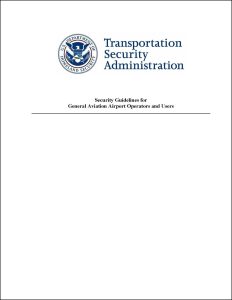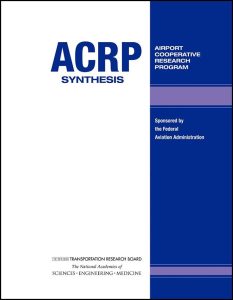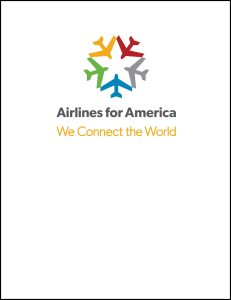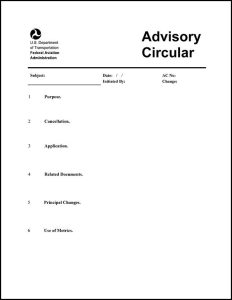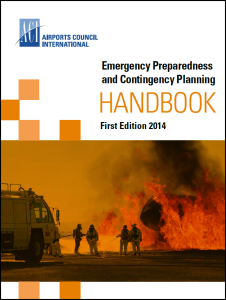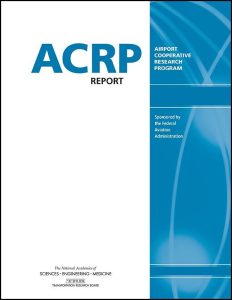To narrow the library of airside resources, use the filter boxes or airport map below or search box above.
Click an item below to expand.
Resources Matching Your Search
2021
This resource is a webpage that provides information on the Electronic Code of Federal Regulations (e-CFR) Title 14, Chapter I, Subchapter G, Part 139, which contains guidance on certification, airport certification manual, and operations.
2020
This document is a comprehensive training resource to assist trainers in developing curriculum specific to their needs. The master curriculum provides overall context for the airport environment and highlights connections between regulatory requirements and job duties.
2021
This guidance document was developed jointly by the general aviation (GA) community and the Transportation Security Administration (TSA). It is intended to provide GA airport owners, operators, sponsors, and entities charged with the oversight of GA landing facilities, including tenants and/or users, with recommendations that address general aviation security concepts, technology, and enhancements. It provides a set of security best practices and a method for determining when and where these enhancements would be appropriate.
2019
ACRP Synthesis 99 documents how emergency workers at airports assist victims and their families and friends in the weeks following an emergency. No matter whether the incident is aircraft-related or takes place in the terminal—such as an active shooter, a bomb threat, or another hazard—the goals of airports, airlines, and others in the airport community are to achieve safety, security, compassion, customer service, regulatory compliance, and reputation. Achieving these goals can contribute to resiliency and the protection of critical infrastructure and key resources.
2015
This document outlines industry practices that minimize the hazards associated with severe weather in the aviation workplace. The document is offered for free through the A4A website and is emailed for download after a no-cost purchase process.
2007
This advisory circular (AC) provides guidance for the site selection and design of buildings used to store and maintain airport snow and ice control equipment, store approved materials, and provide the personnel areas required to support the requirements under the airport operator’s winter storm management plan. This AC does not constitute a regulation and in general is not mandatory. However, the use of these guidelines is mandatory for aircraft deicing facilities funded under federal grant assistance programs.
2021
An airport emergency plan (AEP) is meant to support airports in defining roles and responsibilities of stakeholders during emergencies, identifying threats that could affect airports, and establishing communication protocols for the airport community. ACRP Synthesis 115 gathers relevant data specific to AEP practices that can be applied to other airports, including general aviation airports, whether required to maintain an AEP or not.
2012
ACRP Synthesis 32 highlights current airport and agency—primarily U.S. Forest Service—practices, policies, and procedures at airports called upon to support aerial wildland firefighting suppression efforts.
2013
ACRP Synthesis 45 presents information on mutual aid agreements, addressing nearly every type of emergency that could affect airports and require outside resources. The report is designed to assist airport operators in creating and sustaining effective emergency management mutual aid partnerships by documenting the specifics of existing agreements.
2014
ACRP Synthesis 57 explores how airports plan, manage, and recover from special events to help minimize effects on an airport's regular operations. The report explores issues related to planning, organizing, applying lessons learned, and addressing potential surprises and impacts on operations and customer services related to a variety of non-aeronautical events that occur on and off an airport.
2014
This handbook brings together best practices, knowledge, and experience from airports around the world. The handbook helps airport operators develop and implement a robust airport emergency plan, including the restoration of operations after an emergency. It also deals with business continuity planning. The handbook covers the roles and responsibilities of airport operators, as well as the coordination of emergency response plans with other organizations interfacing with the airport during an emergency. This resource is available from the ACI store for $125 for members and $1,000 for non-members.
2008
This advisory circular (AC) contains information, references, and guidelines for aircraft rescue and firefighting (ARFF) station building design. This AC sets the policy for federally funded fire stations that meet Federal Aviation Regulations, Title 14 Code of Federal Regulations (CFR) Part 139, Certification of Airports requirements for airport facilities.
2013
ACRP Report 88 is designed to help airports identify needs and assess current capabilities with respect to using geographical information systems (GIS) in emergency management (EM). The report discusses GIS and EM and provides a roadmap for airports to move from their current state of GIS implementation (even if they do not yet have any form of GIS) to the point of integrating into EM and coordinating with mutual aid partners. The report contains a CD-ROM with case studies and key lessons learned from airports that have integrated GIS into EM.
2013
ACRP Report 94 provides information for use by operations, public safety and security, and information technology staff at airports of all sizes to evaluate and implement web-based collaboration tools that provide a common operating picture for day-to-day operations and full emergency response management. The report provides a better understanding of the functions of web-based emergency management systems and aids airports in establishing requirements, procuring and installing systems, and implementing training.
2019
ACRP Report 16, second edition, is designed to help airport practitioners, owners, operators, managers, and policymakers of small airports, who may have varying degrees of experience and backgrounds, to fulfill their responsibilities in such areas as financial management, oversight of contracts and leases, safety and security, noise impacts, community relations, compliance with federal and state obligations, facility maintenance, and capital improvements. The first edition has been edited and reformatted for currency, relevance, and usability and updated with additional information and new subject areas (e.g., unmanned aircraft systems, geographic information systems, digital notices to airmen, social media, and federal and state obligations). Also, hyperlinks to many of the documents and resources mentioned in this report, such as ACRP publications, industry sources, and sample checklists, have been collected into ACRP WebResource 6: Resources for Managing Small Airports.
2017
ACRP Research Report 173 explores the potential environmental and health impacts of per- and polyfluoroalkyl substances (PFASs) typically found in aqueous film-forming foams (AFFFs). The report describes methods that can be used to identify areas of potential concern at an airport and ways to implement management and remediation practices. To help airports identify areas of potential environmental concern, the research team developed the Managing AFFF and PFASs at Airports (MAPA) Screening Tool.
2012
ACRP Synthesis 38 includes suggested procedures to help airports expedite the recovery of disabled aircraft that are designed to avoid injury to personnel, damage to airport equipment, and secondary damage to the aircraft.
2017
This document provides practical, hands-on, interactive material useful to airport operators for enhancing communication and collaboration among internal and external airport stakeholders. It is designed to fit the needs of a broad spectrum of airports and is scalable to airports of various sizes and types. This document also provides a tool to assess an airport's current conditions relative to communication and collaboration.
2013
ACRP Report 95 provides advice and tools designed to help organize and operate a citizen volunteer program to assist airport staff in emergency events or disasters. The report explains what a Community Emergency Response Team (CERT) program is and how it can be used in the airport environment. The objective of this report is to assist an airport community in developing an Airport CERT (A-CERT) program that includes the following: an awareness plan and description of benefits, implementation guidelines, and steps for integrating into airport emergency response planning.
2020
ACRP WebResource 8 provides steps for developing a program for integrating social media (SM) and emergency management (EM). SM is an important tool for sharing information among individuals and connecting organizations with customers. For this reason, SM managers are becoming critical elements to EM for information gathering and sharing. Integrating SM with EM can be highly beneficial during incidents, emergencies, and irregular operations, providing improved situational awareness and reducing the time it takes to return to normal operations.


